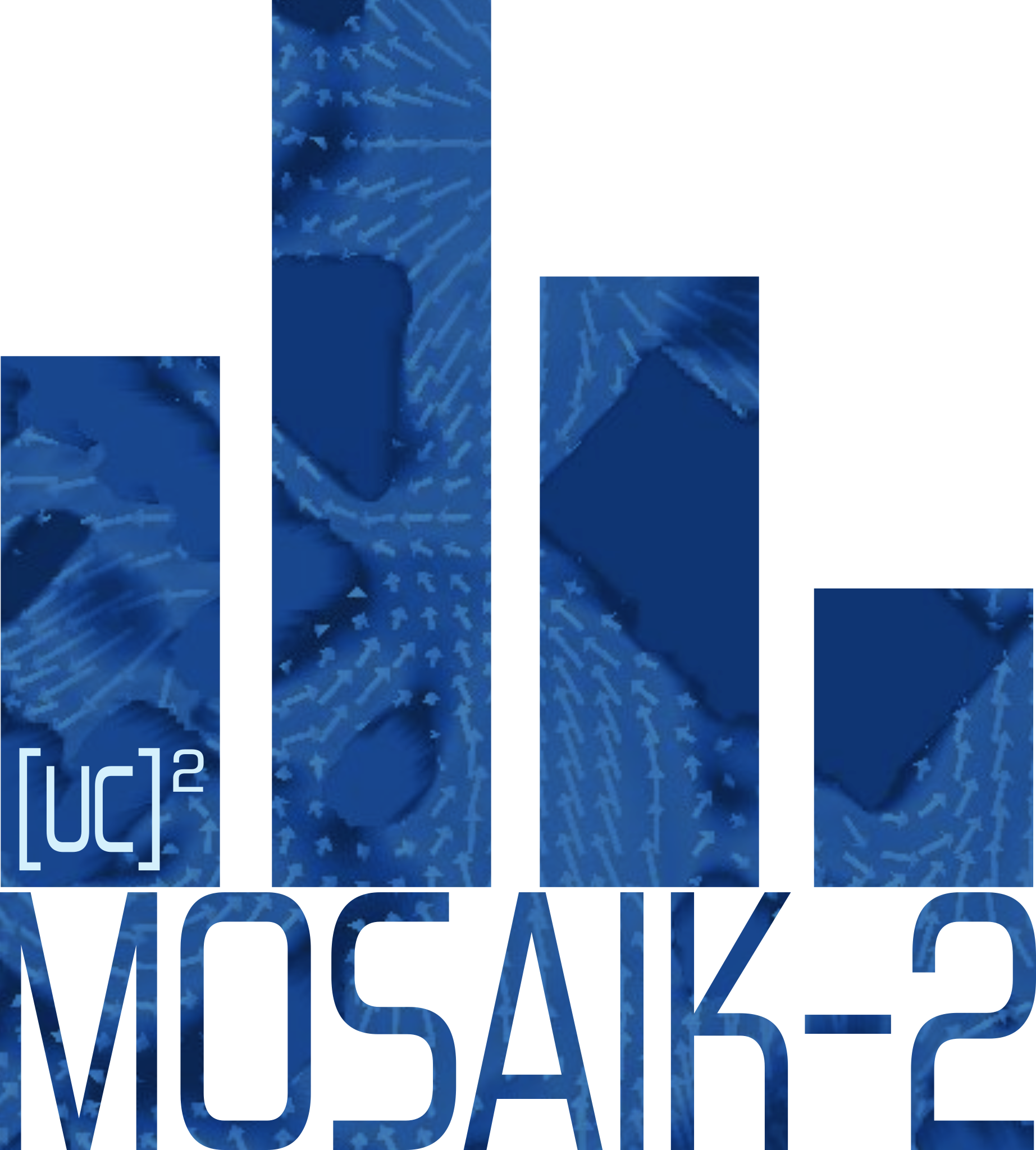| Version 104 (modified by westbrink, 3 years ago) (diff) |
|---|
MOSAIK-2 - Second phase of the project "Model-based city planning and application in climate change"
MOSAIK-2 is a BMBF funded German research project within the joint research project "Urban Climate Under Change" [UC]²) which aims to further develop the PALM-4U urban climate model and to establish it as an operational tool for communities and city planners. The MOSAIK-2 consortium consists of partners from entire Germany that have joined their forces to develop PALM-4U, an urban climate model of unprecedented spatial resolution and computational performance which allows simulations of large cities of a size of up to 2.000 km² with grid-resolved buildings. The first funding period of MOSAIK was from 2016 to 2019. Since September 2019 the second phase has started and will involve further development of PALM-4U, which is fully integrated in the PALM model system.

The newest PALM version is available on gitLAB.
Some features of the PALM-4U components...
- Magnifying lens function (zoom function) that allows planners to perform high-resolution studies for areas of interest of limited size (city quarters, single building environments).
- Nesting to large-scale models.
- Large-eddy simulation mode, which allows to estimate turbulence induced fluctuations (e.g. peak concentrations or wind gusts) for the first time with a PALM-4U.
- Scale-dependent turbulence and building parametrisations to run with varying resolution from 1-100 m.
- Graphical user interface for end users such as city planners, which allows to set up the model, implement planning scenarios, conduct simulations, and visualise the model output data.
- NetCDF as Standard I/O data format.
- Output of human-related quantities as physiological equivalent temperature (PET) or universal thermal climate index (UTCI) but also use a multi-agent system (MAS) to determine critical hotspots based on the behaviour of people.
- A standard catalog of input data for typical weather/climate scenarios, including high-risk scenarios such as heat waves.
These features will allow both simulations with very high spatial resolution (down to 1m) for large cities or
long climate projections as well as more focused simulations with coarser resolution, and exemplary periods or specific areas
(e.g. for city planners) with limited computer resources.
UPCOMING EVENTS | |
PALM Seminar September 2022 |
The next PALM seminar will take place from 12th to 16th September 2022. The seminar will be given in presence or online, based on the feedback of participants as given in the registration form. |
CURRENT ANNOUNCEMENTS | |
Attachments (8)
-
titelbild_4.jpg
(1.5 MB) -
added by maronga 9 years ago.
MOSAIK title
-
maronga_v7.png
(1.5 MB) -
added by maronga 9 years ago.
MOSAIK test logo
- maronga_v8.png (2.9 MB) - added by maronga 9 years ago.
- MOSAIK_logo.png (465.2 KB) - added by maronga 9 years ago.
-
PALM-4U_logo.png
(438.9 KB) -
added by kanani 8 years ago.
PALM-4U logo
-
MOSAIK_forgotten_future_normal.png
(1.5 MB) -
added by hettrich 5 years ago.
MOSAIK-2 official logo
- PALM Seminar September 2020.pdf (511.7 KB) - added by hettrich 5 years ago.
- PALM Seminar February 2021.pdf (3.1 MB) - added by hettrich 5 years ago.



